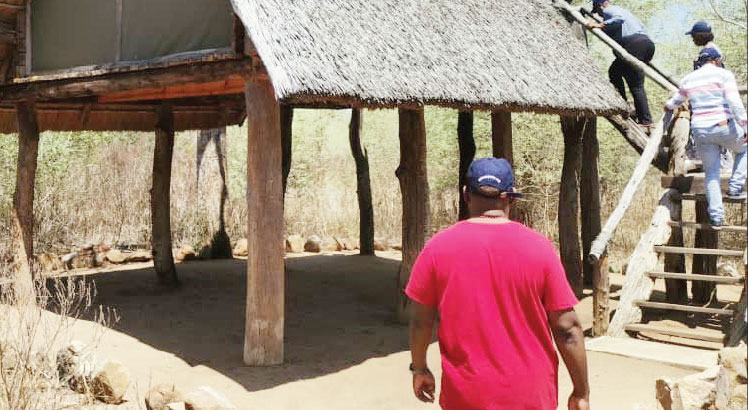Majete, least tapped tourism jewel
When African Parks took over management of Majete Wildlife Reserve predominantly located in Chikwawa District, about 75 kilometres southwest of Blantyre City, in 2003 the place was virtually dead.
People could freely walk through the length and width of the animal sanctuary to poach small game, burn charcoal, fetch firewood and even exploit the hardwood trees for timber. They had no reason to be afraid as there were no animals in the run-down reserve.
In fact, the last elephant in Majete Wildlife Reserve was killed in 1992 while the last black rhino was hunted down in the 1980s and the last large predators were recorded in the habitat back in the 1990s.
No tourist visited Majete in 2002 and just three did in 2003.
However, Majete’s fortunes started to gradually change under the management of African Parks and today it is the sole animal habitat boasting of the “Big Five” in Malawi. This is the only place where you are assured of seeing elephants, lions, black rhinos, leopards and buffaloes.

The black rhinos were reintroduced in 2003, elephants came in 2006, lions in 2012, cheetahs in 2019 and wild dogs in 2020.
To African Parks Majete Wildlife Reserve manager John Andedorff, however, said the place is beyond “big five”. He calls it a “Big Seven” hub as he adds to the list wild dogs and the cheetahs.
This year, Majete Wildlife Reserve has clocked 20 years under the management of African Parks which took over from the Department of National Parks and Wildlife.
From zero in 2003, today, 20 years later, Majete is home to about 70 lions, 40 leopards, 320 elephants, 27 black rhinos, 2 000 buffaloes and countless waterbucks, antelopes, hyenas and more.
Given the status of Majete Wildlife Reserve, African Parks Malawi country manager Samuel Kamoto and Andedorff feel the habitat deserves to be classified better than it is currently.
“Majete Wildlife Reserve is beyond a game or wildlife reserve. It is high time it was classified as a national park. That way, more international tourists will be attracted to come and visit,” said Kamoto when he conducted a team of media managers on a game drive to appreciate the transformation that has taken place in the past 20 years.

In a presentation titled ‘Majete, the story of hope and resilience’, Andedorff said Malawi can reap more from tourism by upgrading wildlife sanctuaries such as Majete and Nkhotakota Wildlife Reserve to national parks.
“In that way [by upgrading], there will be a Malawi tourism package where international tourists would come to visit the national parks, the mountains, the lake and other attractions. In the end, the country will earn more foreign exchange,” he said.
So, from zero tourist back in 2002 and just three in 2022, Majete in 2022 attracted 12 000 tourists who spent $617 000 compared to $4 000 in 2004.
Why the fuss about upgrading to national park?
Briefly, Kamoto said there is more to the name tags ‘national park’ and ‘wildlife or game reserve’.
He said: “In a game reserve, one can walk in and hunt/poach, but a national park is regarded as a protected are a and attracts more tourists because they know they will be safe. In other words, a game reserve is inferior, but legislation need to be revisited to change the status of Majete and Nkhotakota [wildlife reserves].”
Elsewhere, terms game reserve and national park refer to protected areas for conservation of wildlife, natural resources and promotion of biodiversity.
Thus, game reserves are established to conserve and protect wildlife, including large mammals and game species while national parks have broader focus on conservation that includes preservation and protection of a wide range of natural resources.
Perhaps this could be the more reason Kamoto and Andedorff feel Majete Wildlife Reserve deserves better classification to attract more tourists.
During the visit, one appreciates the paved roads, natural vegetation and game viewing spots or hide outs. The reserve has an aerodrome where some tourists fly in to view game.
Majete is open to visitors from 6am to 6pm, but overnight visitors are supposed to be within their accommodation facilities after 6pm unless they are on a night game viewing drive operated by management of the park.
There are facilities for picnics for those on self-catering besides a restaurant and bar for day visitors. Thawale Lodge is an unfenced resort with a natural pool that serves as a waterhole for the animals. It is a pleasant sight to see game quenching thirst while you dine and wine.
Majete Game Capture Campsite, so named as it was the place where the animals were being culled prior to introduction into the park, has accommodation and self-catering facilities. It is in an electric fence to keep away animals.
A biennial aerial census in November 2022 showed that the reserve, which shares boundaries with Chikwawa, Mwanza, Blantyre and Neno districts, had 13 000 animals and 18 species.
I would recommend a day visit or holiday getaway to Majete Wildlife Reserve for a change this festive season. The game drive was awesome and refreshing.





